Before we start, we need to clarify the shrimp species that you would like to breed. You get three types of shrimp. Their common names are Neocaridina, Caridina shrimp, and Sulawesi shrimp. Some of them require different conditions to breed.
Freshwater Shrimp Species
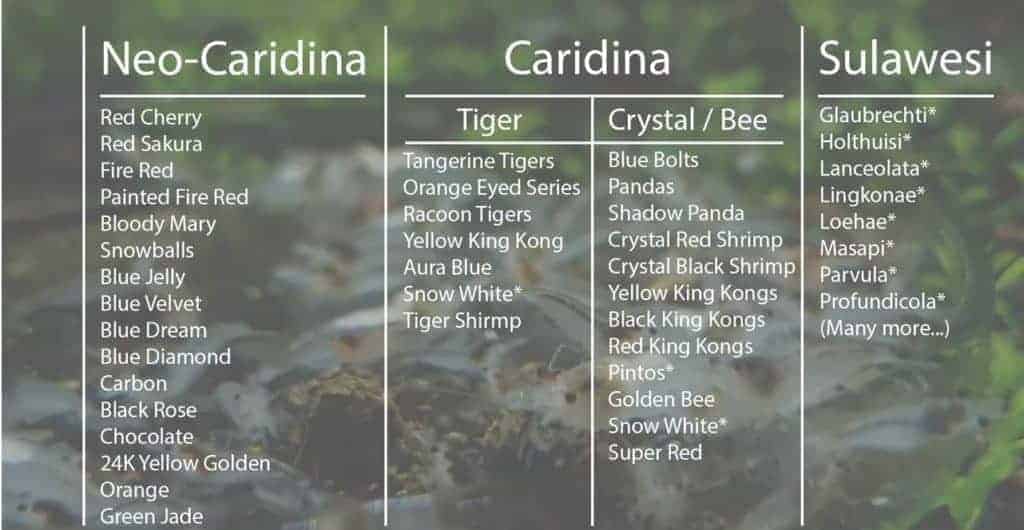
To achieve these conditions, you need to find out what shrimp you have and what shrimp you plan on buying or breeding – check out some of the best freshwater aquarium shrimp you can add to your tank. In the Caridina column, we’ve got two types, the tiger shrimp and the crystal or Bee shrimp. Under them, I will list the most common ones you can find in the market. Next up, we have Neocaridina shrimp. Under them, I’ll also list the most common ones, and lastly, we have Sulawesi shrimp.
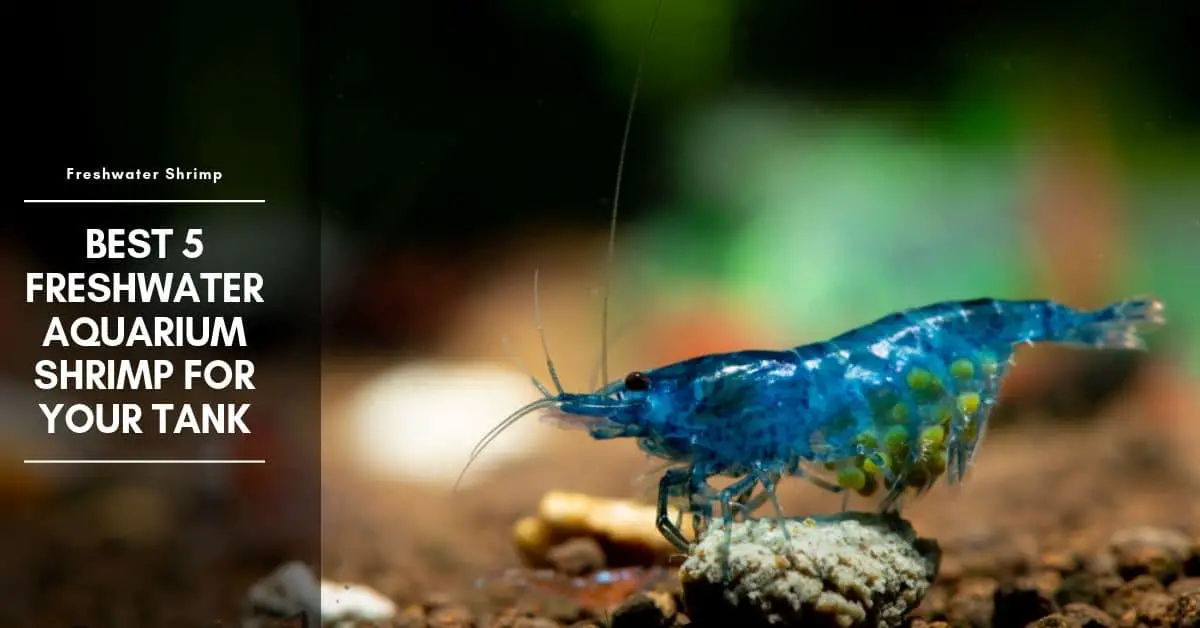
Ok, so now that the shrimp names are out of the way, let’s start. There are a few things that are essential or a necessity to get right in your shrimp aquarium setup to breed shrimp, and there are things that will only allow you to increase the survival rate of your young and make your shrimp more comfortable in the environment. Other shrimp, like mantis shrimp, require different parameters.
But, the things on the right might not have as big of an impact as the things on the left you should understand before trying to breed shrimp. So first we’re looking at the things on the left.
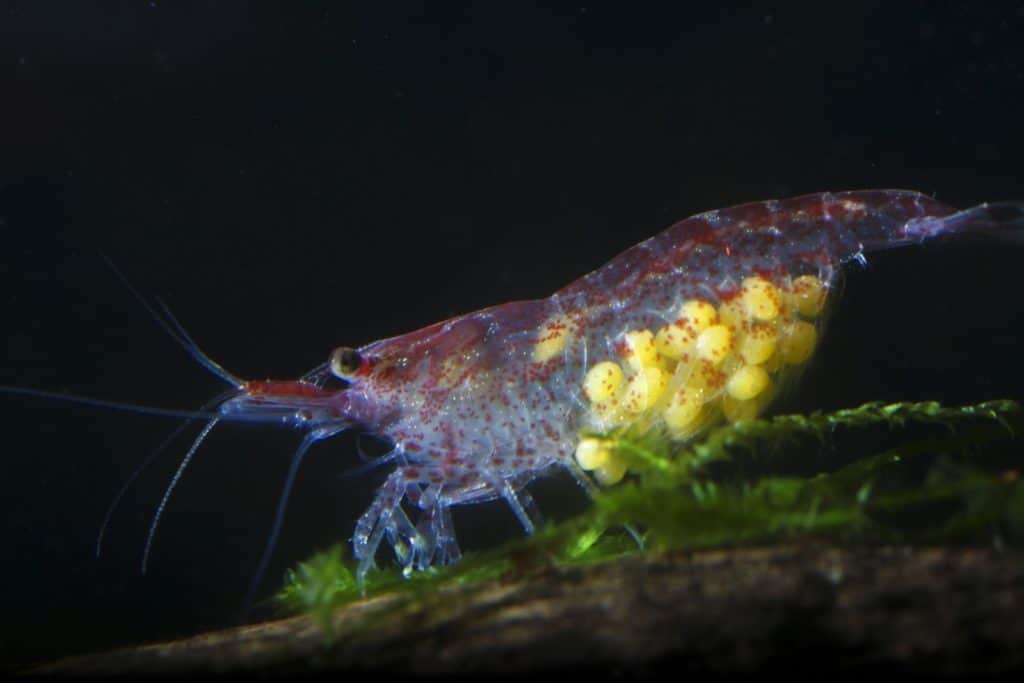
Which Sponge Filter Do You Need For Your Shrimp Tank
The most important thing with the filter is that it must not be able to suck up your baby shrimp. Baby shrimp are anything from one millimeter to three millimeters big. Most sponge filters will work great for shrimp, just make sure that whatever filter you use the baby shrimp can’t enter your filter.
You can use stockings and pantyhose to cover your filter intake if you are scared that your filter might suck up some babies. Just make sure that you use stockings to clear it of debris every few days as the debris tends to build up and it might block your intake or burn out your pump.
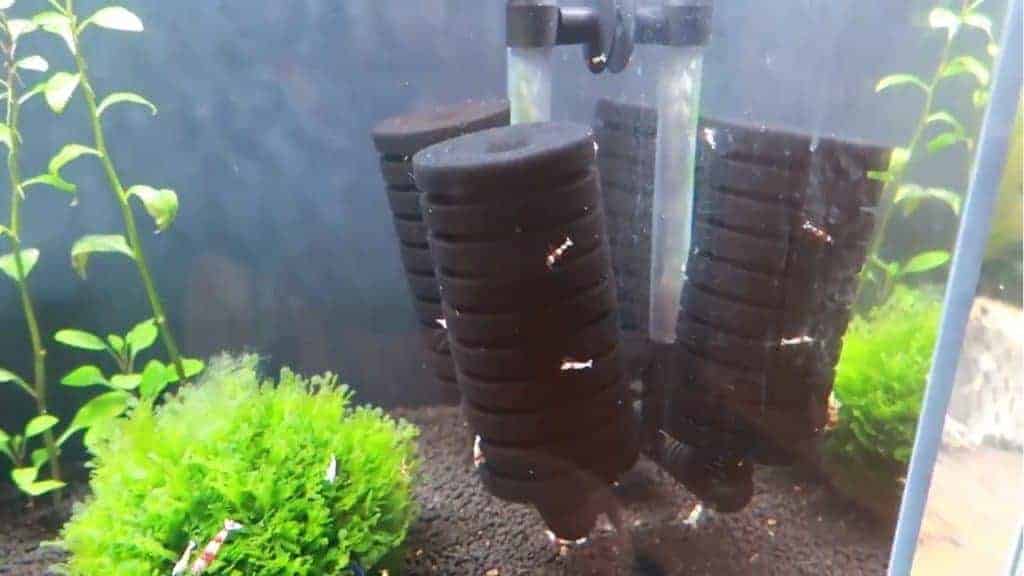
My honest advice is just to use a regular store-bought sponge filter from the start with a high pore count. Normally anything from 25 pores per inch should be okay, but preferably 30 pores per inch.
It is also essential to understand why you have a filter in the first place. Most new people in the hobby believe that the reason we have a filter is to clean the water so that we can see through it, and we don’t have to look at the dirty aquarium. Now, guys, this is partly true, but the main reason for having a filter is so that we can break down the ammonia that our livestock produce.
Nitrogen Cycle Process In Shrimp Tank
You see, all our livestock produces ammonia when the shrimp poop the poop already started the decaying process, and this releases ammonia, which is toxic to your shrimp. The same with feeding all of the uneaten food can rot and will cause ammonia.
The bacteria that builds up over time in your filter breaks down this toxic ammonia into ammonium and ammonium into nitrite and then the nitrites into nitrates.
Please check this link on nitrogen cycle if you don’t understand what I’m talking about, as this is very important for the survival of your livestock.
While we’re on the topic of filters just remember the shrimp need oxygen to survive. This is created by breaking the surface of the water either in the form of multiple bubbles breaking the surface of the water or just by rapid water movement close to the surface most filters will create oxygen exchange.
Water Parameters
Okay, so now that you understand a filter, let’s talk about water or rather water parameters. Once again, this is one of the two necessities that you need to know correctly when breeding shrimp, and this is most likely THE MOST IMPORTANT THING to understand, that is why I’m going to take my time explaining water and water parameters to you.
API STRESS COAT Aquarium Water Conditioner 16-Ounce Bottle
Tetra AquaSafe Plus, 8.45 Ounces, aquarium Water Conditioner And Dechlorinator, Model Number: 46798162681
$10.19 (as of December 13, 2025 08:17 GMT +03:00 - More infoProduct prices and availability are accurate as of the date/time indicated and are subject to change. Any price and availability information displayed on [relevant Amazon Site(s), as applicable] at the time of purchase will apply to the purchase of this product.)API TAP WATER CONDITIONER Aquarium Water Conditioner 16-Ounce Bottle
$8.48 (as of December 13, 2025 08:17 GMT +03:00 - More infoProduct prices and availability are accurate as of the date/time indicated and are subject to change. Any price and availability information displayed on [relevant Amazon Site(s), as applicable] at the time of purchase will apply to the purchase of this product.)Water parameters for each species of freshwater aquarium shrimp differ, and next to having a good filter, the most important thing here is to keep your water parameters correct as well as constant.
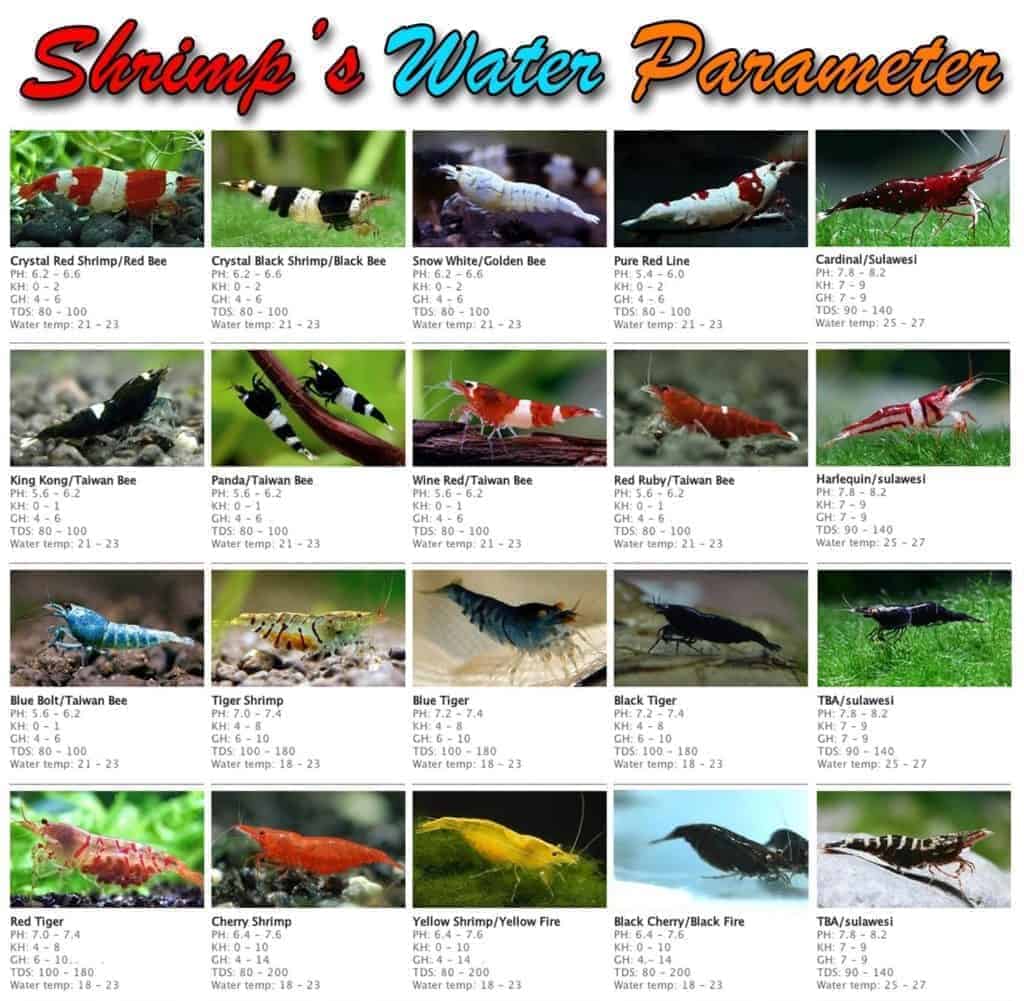
pH
The first water parameter we’re going to look at is pH. pH stands for the potential of hydrogen and is measured on a scale from 0 to 14. Closer to 0, meaning the water is more acidic, seven meaning the water is more neutral, and closer to 14, meaning the water is more alkaline.
pH test kits are relatively cheap and can be found at most pet shops. But what pH do shrimp require? Well, starting with the Caridina shrimp, they require a pH of between 6 and 7. Bee shrimp require a pH of between 5.8 and 6.8; Neocaridina shrimp require a pH of between 6.5 and 7.5. Sulawesi shrimp require a pH of between 7.5 and 8.5.
GH
Next up, we have GH. GH stands for the general hardness and is the amount of calcium and magnesium ions in the water, measured in parts per million.
GH test kits can also be bought at most pet stores. Caridina shrimp require a gH of between 4-8, Bee shrimp between 4-6, Neocaridina shrimp between 6-8, and Sulawesi shrimp between 4-6.
KH
The next factor to consider is KH. KH stands for carbonate hardness. All that this means it’s the ability of the water to buffer or the ability the water has for the pH to change very quickly. The older the aquarium is, the lower this figure tends to be.
Caridina tiger shrimp require a KH of between 2-6. Bee Shrimp between 0-4.
Neocaridina shrimp between 1-4 and then Sulawesi Shrimp between 2-4.
TDS
Next up, we have TDS. TDS stands for total dissolved solids. This is everything, all the solid particles that are not pure H2O molecules in the water.
From minerals, chemicals, ammonia, nitrites, nitrates, and all sorts of other particles.
You can measure the TDS by using a TDS pen. Most pet stores sell them.
A lot of people put too much focus on TDS, but basically, I only use TDS as an indication of when to do water changes. When the TDS gets a bit high, I’ll do a water change.
Caridina tiger shrimp require TDS of between 100-220, Bee shrimp between 100-180, Neocaridina shrimp between 150-250, and Sulawesi shrimp between 200-260.
Temperature
And then the last water parameter we need to talk about is the temperature in a shrimp tank. This is where everyone will have a different opinion, but the general recommendation is between 70-75 degrees Fahrenheit. Only Sulawesi shrimp require a higher temperature between 74-84 degrees.
Now when it comes to temperature, consistency is the most critical factor. If there are water temperature changes, you want them to be slow, not dramatic, and quick Bigger aquariums are always better for temperature control as this naturally creates more consistency.
Bigger aquariums take longer to cool down and longer to warm up, this is why I will always suggest a two-foot aquarium for breeding shrimp in one-foot things just go wrong too quickly.
Now, if you keep shrimp outside of the 70-75 degree recommendation, which a lot of people do – this is how it will affect your shrimp. Higher temperatures mean a shorter lifespan and quicker breeding, and they will eat more, but this might have a slight negative impact on the quality of the offspring.
Lower temperatures, on the other hand, might give your shrimp a longer lifespan, their breeding cycle might be longer, and they will most likely eat less. I will always recommend to people to try and keep the temperatures at 70 to 75 degrees because this will give your shrimp the perfect balance. You are more than welcome to deviate from this but not more than 2 to 3 degrees.
Okay, so now I covered the water parameters that your shrimp require. Now some shrimp, especially the Neocaridina Shrimp, can survive outside of these parameters, but they most likely won’t thrive. I know a few breeders who deviate from these figures, and at the end of the day, it comes down to what works for you.
These are your pets, and you are responsible for creating the right environment for them. To understand how to make this perfect environment, we further have to discuss where water comes from.
Red cherry shrimp water parameters
| KH Carbonate Hardness | 0 – 10.0 |
| GH General Hardness | 4.0 – 14.0 |
| pH | 6.4 – 7.6 |
| Temperature | 64°F – 78°F |
| TDS | 80 – 200 |
Water Source
So let’s talk about water sources. You get tap water, which obviously comes from the tap. Borehole or well water, which comes from under the ground, rainwater, well it’s rain, so it obviously comes from the sky and then reverses osmosis water, which just means that the water has been filtered and has gone through an RO membrane.
RODI water is as close to clean H2O as possible, with almost nothing else in it. For the most part, Neocaridina shrimp – the easier to keep shrimp can survive and reproduce on tap or wall water.
Caridina shrimp which is the more challenging to keep shrimp might survive for a few months on tap water, but they tend not to do well and only slowly die off within a couple of months. So the alternative to tap water for the harder-to-keep Caridina shrimp is generally filtering the water and then filtering it through an RO membrane to turn it into RO or even RODI water.
RO water is almost nothing but H2O, so the TDS of our water should be between 0-5 ppm (parts per million). Now please don’t think that shrimp will like RO water. Shrimp need magnesium, calcium, and other minerals to survive and thrive.
So generally, with RO water or rainwater, you need to remineralize. This means adding the right minerals back to the water that will create almost the perfect environment for your shrimp to live in.
In conclusion
The most important thing for shrimp is consistency. Try to keep everything as stable as possible with each temperature, GH, and pH. Keep everything as stable as possible. That’s the best step I can give any shrimp breeder. Consistency is key to shrimp breeding.
Okay, so after all of this, if you still have questions, drop me a comment down below, and I will try to give you some advice.
Please find a web story for shrimp and the water parameters they need.

Hi, my name is Sean, and I’m the primary writer on the site. I’m blogging mostly about freshwater and saltwater aquariums, fish, invertebrates, and plants. I’m experienced in the fishkeeping hobby for many years. Over the years I have kept many tanks, and have recently begun getting more serious in wanting to become a professional aquarist. All my knowledge comes from experience and reading forums and a lot of informative sites. In pursuit of becoming a professional, I also want to inspire as many people as I can to pick up this hobby and keep the public interest growing.
Read more about Sean.
Please join also my Facebook group.

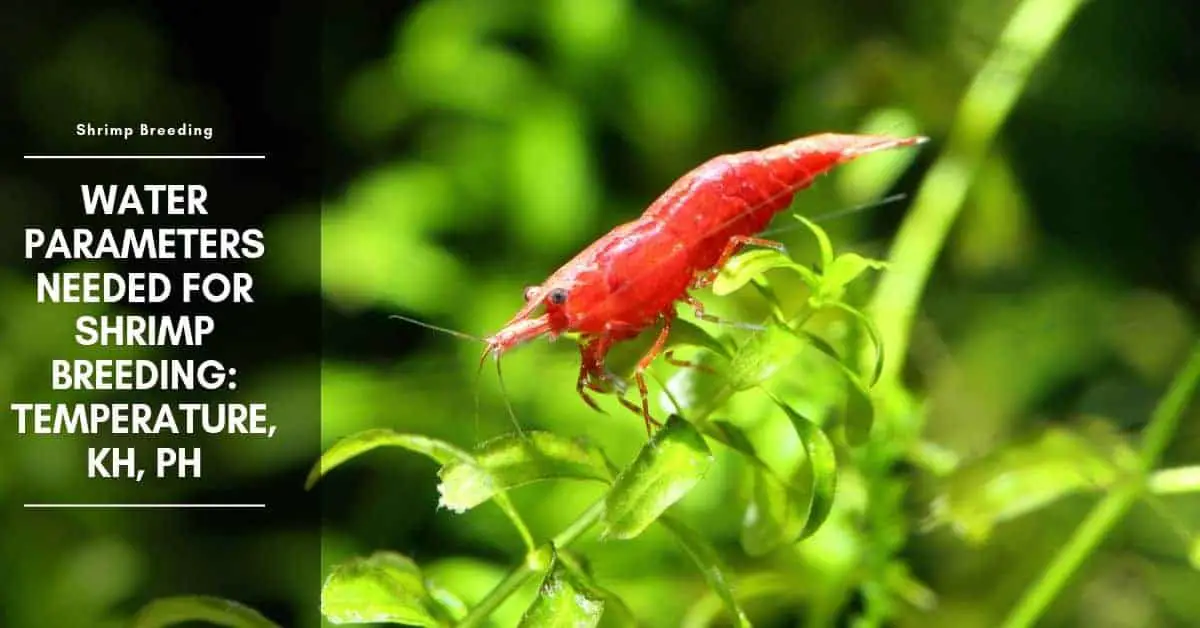



















Thank you Sean, hope I’m going have biggest bee shrimp farms here
Thank you Ali,
Good luck!